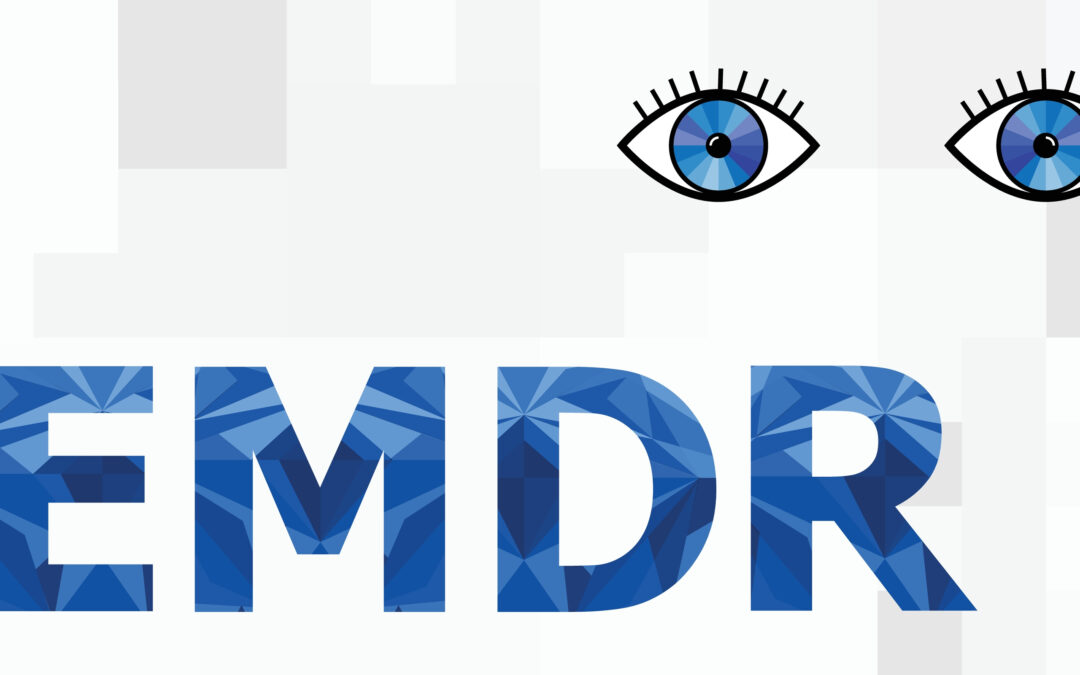I am trained in a lot of different approaches to help with anxiety, but I find EMDR to be one of the most impactful and long lasting. One of the ways I describe EMDR is it can go places in therapy where talk therapy can not.
Another way I describe how EMDR is to my clients is, it helps your heart and your brain get on the same page. It can be very frustrating when your heart feels calm about a situation while your mind is having racing thoughts about something. You know internally, part of you feels calm about a situation, but another part of you is having racing thoughts which then can grow into other increased anxiety reactions.
EMDR helps your mind and body get on the same page, so when your mind starts having racing thoughts, those racing thoughts can be turned off, so your body doesn’t have a physical anxiety response.
But not everyone experiences anxiety this way. Sometimes our body will have physical anxiety reactions (heart palpitations, sweaty palms, tinnitus) and the person experiencing this will have no clue why. They aren’t having racing thoughts or in a situation they consciously feel is anxiety provoking or fearful, so why is their body responding in this way? EMDR helps find those answers and helps the body to stop having panic attacks or anxiety physical reactions, instead having the body reflect what an individual is consciously feeling instead. So if a person is feeling elated, happiness and thriving can be experienced in the mind and the body at the same time.
How Does EMDR Help With Anxiety?
EMDR is a type of psychotherapy that helps individuals work through heightened emotions or traumatic experiences by combining elements of exposure therapy, cognitive behavioral therapy (CBT), and bilateral stimulation. EMDR is well-known for helping with Post-Traumatic Stress Disorder (PTSD) or helping individuals who have been through major trauma, but EMDR is also very helpful when people have experienced difficult or emotional heightened experiences. Sometimes these difficult or emotional heightened experiences haven’t been processed in a healthy way, leaving individuals to experience anxiety symptoms.

Late psychologist Francine Shapiro developed EMDR in the late 1980’s with the underlying principle that unresolved trauma or disturbing memories can get “stuck” in the brain. When these memories get “stuck” it impacts the brain’s processing system, leading to emotional distress and anxiety symptoms. EMDR helps to locate these memories and aims to help the brain build less upsetting connections around them. Once these upsetting connections have been minimized, then more healthy and adaptive connections can be established. When healthy and adaptive connections are established, anxiety symptoms reduce and are replaced with intentional responses that individuals want in a situation.
Bilateral stimulation is thought to mimic the rapid eye movement we experience during sleep. This engages both sides of the brain at once, which allows the client to develop new thoughts, feelings, and reactions around targeted memories. Bilateral stimulation can consist of eye movements (following lights on a horizontal bar right to left, left to right) rhythmic, alternating pattern of hand-held buzzies, or auditory sounds with headphones (sounds usually consist of a beep or a click).
There is a lot of variety when working with bilateral stimulation. Some clients choose to use all three forms of bilateral stimulation at once, while some clients may only use one at a time. Some forms of bilateral stimulation seem to work better with some distressing memories than others. Clients also choose how much bilateral stimulation is done within a 60 or 90 minute session. Some sessions consist primarily of bilateral stimulation while other clients want to talk about the different “ah ha” moments and new connections that are forming from the bilateral stimulation. Every client is different. We find the best approach that works for each client.
What Is It Like To Utilize EMDR For Anxiety
When I work with clients who are experiencing anxiety and we include EMDR in the therapeutic approach to reduce or eliminate anxiety symptoms, we first explore what the anxiety looks like for that individual and where they are experiencing the symptoms. Even though anxiety symptoms have of a lot of commonalities, everyone’s experience of anxiety is different. When understanding a person’s full experience of anxiety, it helps to formulate exactly where EMDR should be utilized.
Factors To Understand A Person’s Full Experience Of Anxiety:
- Physical Symptoms
- Anxiety, Cognitive Disturbances, or Racing Thoughts (if applicable)
- Where is the anxiety happening?
- Current emotional distress
- History of trauma events or memories (if applicable)
- History of emotional heightened memories (negative or positive)
- Medical History that could attribute to anxiety (thyroid condition, lyme disease, microbiome disruption, etc)
- Current support system and relationships
- Current Lifestyle (what is the person eating, how is sleep, daily routine, career or academic situation)
- Family History
- Academic Experience
- What would life look like when the anxiety is minimized or gone? What are the specific goals?

After gathering this data, the client and I explore which memories or negative experiences they would like to target while utilizing bilateral stimulation. We then explore which bilateral stimulation seems to be the best fit and how for some clients this can change through the session or change from session to session.
With bilateral stimulation, clients’ also differ in their preference on how much they want to use it in session. Some clients will use it primarily for the entire session while others may use it briefly and then want to explore the new connections regarding anxiety that occurred during the bilateral stimulation.
After clients start experiencing a reduction in anxiety symptoms, we explore how life looks differently now. Throughout the EMDR sessions we talk about where anxiety is still present and where it has dissipated. For clients where the anxiety is still present in specific areas, we utilize more targeted specific EMDR techniques for those areas.
Can I Use EMDR For Anxiety If I Don’t Have Major Trauma?
A lot of my clients that come for anxiety treatment don’t have major trauma. Most of the time, clients are surprised that EMDR can be used because they haven’t had major traumatic life events in their life history. Some people are still under the popular assumption that EMDR is only helpful for people with major trauma.
But that is not the case. A lot of the time, heightened emotional negative experiences (some would define as minor trauma or “little T” experiences) that are stuck in the brain’s processing system are what is causing anxiety or contributing to anxiety. Heightened emotional experiences can include ongoing bullying as a child, repetitive microaggressions at work, toxic teacher or boss, a bad break-up with a loved one, going through an amicable divorce as a child or as an adult, etc. There are many different forms and experiences of what can constitute heightened emotional negative experiences.
If you’re continuously told that you’re not good enough, smart enough, strong enough, or nice enough – those negative moments can add up to create a feeling of anxiety about existing in the world. An EMDR therapist tries to target the initial or most significant events where you were introduced to an idea of yourself that shook your sense of worthiness. Negative belief systems around oneself can create anxiety that can take longer to heal because they tend to have many roots.
Are you experiencing anxiety and curious if EMDR could help? Contact me today for a free phone consultation utilizing my online scheduler. You can ask me any questions you may have about my anxiety treatment practice online and in Simsbury, CT.


